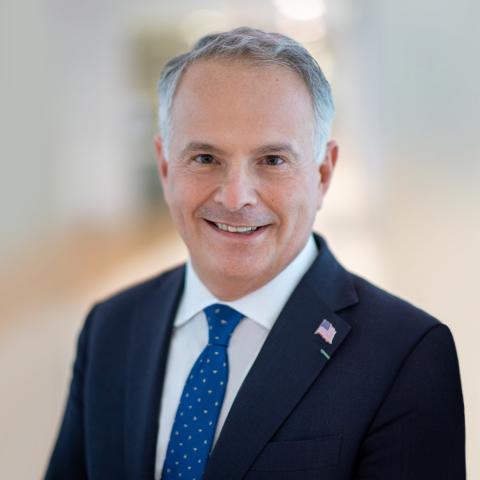US-Japanese Global Leadership
Prime Minister Fumio Kishida and President Joe Biden concluded 70 agreements during Kishida’s visit, demonstrating that the United States–Japan alliance has become a relationship of peers. Former Prime Minister Taro Aso noted in January that the US and Japan were a “G2” that would lead the way in establishing global political, economic, and security norms. This bilateral partnership would work to “uphold and bolster the free and open international order based on the rule of law that has allowed so many nations to develop and prosper,” Kishida said in yesterday’s joint statement.
US-Japan joint leadership is far more palatable than a Washington-Beijing G2, which Chinese President Xi Jinping proposed in 2013 and reiterated in 2023. Xi’s G2 would treat the rest of the world as spoils to be divided up between Beijing and Washington—a far cry from China’s self-proclaimed stance as champion of the Global South.
In his congressional address, Kishida acknowledged that this leadership is a significant burden, especially as “the international order that the US worked for generations to build is facing new challenges, challenges from those with values and principles very different from ours.” It is only natural for Americans to feel “an undercurrent of self-doubt . . . [of] what your role in the world should be.”
Kishida sought to reassure Americans who are skeptical about global engagement, noting that neither Japanese nor American leaders want to “leave our children a society where human rights are suppressed, where political self-determination is denied, where our lives are monitored by digital technology.” Kishida vowed that Japan would work side-by-side with the US to avoid such a future, pointing to Japan’s transformed security outlook, increasing defense budget, and active global diplomacy as proof of Tokyo’s evolution from a “reticent ally” to a burden-sharing partner in a world of geopolitical, geoeconomic, and geo-ideological competition.
Cooperation and Leadership with Other Partners
The latticework of US-Japan–led partnerships in Asia embody Washington and Tokyo’s cooperation. This includes the QUAD (US–Japan–Australia–India), the US–Japan–South Korea trilateral relationship, the US–Japan–Philippines trilateral dialogue, exercises between the US and Japan with Australia and the United Kingdom, and growing discussion of Japan joining Australia, the United Kingdom, and the US in AUKUS Pillar II. Through these self-reinforcing multilateral frameworks, Japan and other US allies can work together more directly, rather than solely through the US in a hub-and-spoke model.
The need for enhanced diplomatic cooperation between the US and Japan also applies to the Global South—particularly Southeast Asia, where Japan should take the lead. The rules-based order that encourages the free flow of capital, information, and goods has supported peace and prosperity in Southeast Asia for more than four decades. But this order is increasingly under threat from China’s unlawful and aggressive seizure and claims of territory and exclusive economic zones (EEZs) in the South China Sea. This occurred most recently with the China Coast Guard’s gray-zone water cannon attacks on Philippine ships over the Second Thomas Shoal.
More than 60 percent of global trade flows through Southeast Asian waters, so China’s territorial aggression should worry leaders worldwide. Yet much of Southeast Asia remains publicly noncommittal on questions of the free and open Indo-Pacific (FOIP), which former Japanese Prime Minister Shinzo Abe introduced. Their stance is based on a wide range of rationales that go as far as dismissing FOIP as a canard for US-China competition rather than a collection of principles that support mutual security and economic growth. Japan’s multigenerational economic presence in Southeast Asia and continued infrastructure investment means that Tokyo is well positioned to communicate the value of working together to uphold international norms in this vital region.
The US–Japan–Philippines trilateral was an opportunity to implement many of these ideas in both the security and economic realm. Japan and Australia joined the Philippines and the US in a freedom of navigation exercise through the South China Sea on April 7. Japan also contributed air surveillance radars to the Philippines and will soon conclude a reciprocal access agreement (RAA) with Manila to allow Japanese troops to train on Philippine soil. The trilateral talks also promised considerable Japanese and American investment in the Philippines, including port, rail, and clean energy infrastructure as well as semiconductor manufacturing. The aim is to demonstrate how working with Japan and the United States can advance security and prosperity within Southeast Asian nations and the region as a whole.
Partnerships in Operational Command and Control and the Defense Industrial Base
A strengthening US-Japan partnership is also apparent in the summit’s focus on greater operational command and control coordination between US and Japanese forces during a crisis. The two forces have traditionally operated in isolation. But growing security uncertainty in the Indo-Pacific is forcing change. That change includes Japan’s development of a Joint Operational Command (J-JOC) and the likely introduction of a Japan-based US operational command. The two commands would be able to work closely together in a crisis. The agreement also includes cooperation in intelligence, surveillance, and reconnaissance (ISR), networked air defense with Australia, and enhanced missile defense coordination in the region.
Expanding cooperation also extends to the defense industry. Bottlenecks plague the US defense industrial base, particularly in the construction and maintenance of naval vessels that Washington would need in an Indo-Pacific conflict. During his visit to Hudson Institute last October, Defense Minister Minoru Kihara championed the idea of using Japanese commercial shipyards to conduct maintenance and repair of US Navy ships, rather than forcing US ships to travel several thousand miles to American home ports. Ambassador Rahm Emmanuel has also supported this solution.
Last, the summit produced plans to formalize such cooperation through a Forum on Defense Industrial Cooperation, Acquisition, and Sustainment (DICAS), led by the US Department of Defense and the Japanese Ministry of Defense. DICAS will “identify priority areas for partnering US and Japanese industry, including co-development, co-production, and co-sustainment,” particularly of air defense missiles. In the future, the US and Japan should seek to increase defense industrial and technological cooperation ties with other partners like Australia, the UK, and South Korea. These partnerships would likely examine the development of unmanned aerial systems, cyber capabilities, and hypersonic missiles.
An Integrated Approach to Trade, Technology, and Economic Security
The summit’s agreements and joint statement show that Tokyo and Washington increasingly understand that trade, economic security, and technology are inextricably linked. This, as Ministry of Economy, Trade, and Industry (METI) Principal Director of Economic Security Kazumi Nishikawa explained at Hudson on April 5, requires an integrated approach to these issues.
Such a mindset is apparent in the joint statement’s promise to launch “a new high-level dialogue on how we implement our respective domestic measures and maximize their synergies and impacts, including the US Inflation Reduction Act [IRA 2022] and Japan’s Green Transformation (GX) Promotion Strategy.”
This is a response to Japanese officials’ frequent complaints that America haphazardly applies economic security regulations and industrial policies, often with little warning or consultation with key stakeholders. These stakeholders, who are often Japanese, are harmed the most. The Biden administration’s electric vehicle mandate and battery subsidies in IRA 2022 are the primary examples of this pattern. Yesterday’s joint statement suggests these Japanese concerns have finally gained traction.
The summit factsheet also contains numerous cooperative emerging technology and critical minerals initiatives. Affected sectors include artificial intelligence, semiconductor research and packaging, quantum technology, fusion energy, and telecommunications. As Nishikawa explained, METI proposes an integrated approach to technology that promotes the development of emerging technologies, protects existing technological leadership, and prevents overdependency on any one source for mature technologies.
Media attention on the fact sheet concentrated on developing emerging technology. But the plans to address supply chain vulnerabilities in critical minerals and mature technologies, such as legacy semiconductors, may be more significant as these agreements require Washington and Tokyo to immediately implement policies to address ongoing Chinese economic coercion.
Japan Looks Regionally
After his meetings in Washington, Kishida will go to North Carolina to visit Toyota’s battery plants and Honda’s aircraft plant. This visit is in part a response to polarization in Washington during an election year that has created political roadblocks for bilateral economic relations. This includes Biden’s opposition to Nippon Steel’s acquisition of US Steel, not for national security or antitrust reasons but for what appears to be purely political grounds.
The solution, in the minds of many Japanese government and business officials, is to look more regionally. It is no coincidence the summit factsheet includes the states and municipalities of planned Japanese investment in the US. As Governor Eric Holcomb noted in his speech at Hudson on April 5, states can offer practical, businesslike approaches to investment that welcome Japanese companies.
As Japan External Trade Organization (JETRO) New York president Satoshi Miura noted, Japan remains the largest investor in the United States, and Japanese companies employ nearly one million Americans. Japanese industry and related organizations, such as the Keidanren, continue to emphasize their commitment to contributing to America’s economy and society. Increasingly, they are looking for new, more vocal ways to express those promises outside of Washington.
Conclusion
Prime Minister Kishida’s state visit to Washington marks the significant advances in security, economic, and technological cooperation between Japan and the US under his government. The 70 agreements he concluded with President Biden confirm that Japan is America’s most important ally—a key and equal partner in maintaining the rules-based international order that has brought security and prosperity to the Indo-Pacific.
Time will tell if the US and Japan are able to implement such an ambitious program, but Kishida and Japan deserve a great deal of credit for making the necessary security and economic policy choices that have made these commitments possible.




















